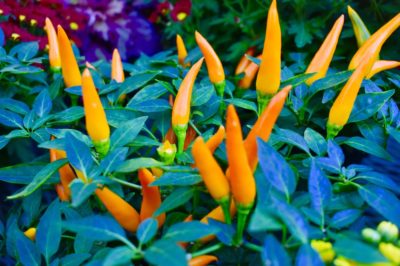Seedlings
In regions at or below USDA hardiness zone 8, your peppers should be planted indoors 8-12 weeks before the garden is warm enough for them. This is essential in northern climates to get the maximum production from peppers.
As soon as the seedlings appear, move them under fluorescent lighting. Simple shop lights are fine, there is no need to purchase a full spectrum plant light since you aren’t growing them out and fruiting them indoors. Place the lights 2-4 inches above the tallest seedling. As they grow, move the light up so that it is always at this distance.
There are several main factors to pepper plant success:
- Managed Watering
- Temperature
- Feeding
Watering
Pepper seedlings do not need overhead water. Keeping them too moist in the greenhouse often leads to damping off which is a condition where the stem rots, causing the seedling to die. Bottom water the seedling trays for the best results.
Once pepper plants establish themselves they require 1-2 inches of water per week. They are sensitive to extremes on both ends and can wilt or drop blossoms from overly wet conditions as well as dry conditions. Adjust for precipitation and if the forecast calls for an abundance of water, consider covering pepper plants with plastic to avoid over-saturation.
Temperature
Ideally, pepper seeds will germinate at temperatures between 70-80°F(21-26°C). Then, as they get ready to go outside you’ll need to harden them off. Do this by slowly decreasing temperature or moving the plants outside for a limited time and increasing that amount of time each day. They will settle into a growing temperature of around 65-70°F(18-21°C).
Do the same adjustment for introducing them to direct sunlight. If started in a greenhouse or under lights, direct sunlight will be too much for them at first. Expose them to a 1/2 hour of dappled light at first. Gradually increase the time and intensity of light each day for up to three weeks before permanently moving them outside.
Feeding
Peppers require plenty of nitrogen and other essential nutrients, but too much soluble salt-based fertilizer will damage them. Never use a fertilizer with ammonium-based nitrogen for pepper plants.
Apply 3-4 inches of compost across the pepper planting bed. This can be worked in or allowed to sit on top as a mulch. When the plants begin to bear fruits, apply another 1-2 inches of compost as mulch. You can even add mulch on top of the compost to further protect and nourish.
